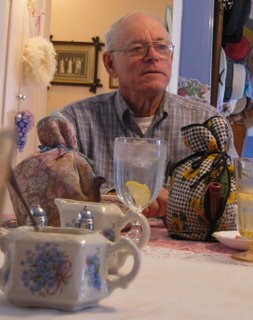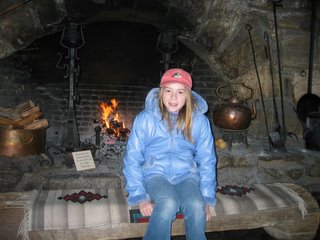How the Grand Canyon Was Formed
By Emma Messinger
While overlooking the Grand Canyon, that enormous and majestic hole in the ground, many people, including me, would ask how it was formed. It is still being formed today by the churning Colorado River, slowly chiseling the walls. How it began though, and how it is still being formed, is a complicated process considered a geologic wonder.
There are tectonic plates spread around the world that carry the Earth’s crust. The plates are stiff but move around on top of the Earth’s mantle. There is a tectonic plate that holds the North American continent. This plate meets the Pacific plate on what is now the western border of California. Between 100-65 million years ago there was another plate that carried mostly ocean (an “oceanic plate”) that started to slide under the western edge of what is now the United States. Where the land was closer to the California shoreline the oceanic plate hit hard and fast creating rugged mountains, like the Rocky Mountains. Farther inland, on the Colorado Plateau, where the Grand Canyon would form, the effects of the oceanic plate were gentler and the Colorado Plateau was raised thousands of feet above the surrounding area without disturbing or jumbling up the layers of rock. This is why the Grand Canyon is such an amazing record of Earth history, because the gentle uplift left the geologic record of the rocks undisturbed.
The Colorado River was like a knife cutting the cake of the Colorado Plateau. But, it was as if the cake, because of uplifting, was moving, instead of the knife. In this way the Colorado River ate away at the Colorado Plateau.
The river is not responsible for everything you see in the Grand Canyon. In fact, the only reason why the river is a cause for the Grand Canyon’s formation, is because of all the rocks and sand being rolled around and scraping at the canyon walls. There are many different kinds of erosion that create the canyon. Water getting into cracks in the developing Grand Canyon froze during nights causing expansion which broke apart rocks. The sun baked the soil of the Grand Canyon so when rains would come they would run off instead of soaking in, another form of erosion. The last form of erosion that is carving the Grand Canyon would be wind, shaping the walls and towers. These forms of erosion are what made the canyon so wide at the top, once the Colorado River had opened up the first narrow canyon.
 When were the layers that can be seen in the Canyon created? At the bottom of the canyon there exists an ancient mountain range formed about 1.7 billion years ago. Even these very old rocks are only about half the age of the Earth, which is about four billion years old. Still there are very few places on Earth that you can trace the history of the Earth as far back as you can at the Grand Canyon. On top of these old base rocks, there are several different layers of sediment and mud. Some of these layers even include fossils of ancient sea animals, which means that before the uplift, there were several times when the lands and region that now make the Grand Canyon were covered with oceans. Geologists use a mnemonic sentence to help us remember the names of the primary rock layers shown at the right: “Know The Canyon’s History, Study Rocks Made By Time.” The bottommost layer does not exist in this sentence: a layer of Vishnu Schist and Zoroaster Granite, which is volcanic rock, cooled magma and slowly cooled and crystallized rock forms raised from the mantle of the Earth when the collision between the two plates occurred when the oceanic plate slid under the North American plate and pushed up stuff from the mantle through the crust of the Earth.
When were the layers that can be seen in the Canyon created? At the bottom of the canyon there exists an ancient mountain range formed about 1.7 billion years ago. Even these very old rocks are only about half the age of the Earth, which is about four billion years old. Still there are very few places on Earth that you can trace the history of the Earth as far back as you can at the Grand Canyon. On top of these old base rocks, there are several different layers of sediment and mud. Some of these layers even include fossils of ancient sea animals, which means that before the uplift, there were several times when the lands and region that now make the Grand Canyon were covered with oceans. Geologists use a mnemonic sentence to help us remember the names of the primary rock layers shown at the right: “Know The Canyon’s History, Study Rocks Made By Time.” The bottommost layer does not exist in this sentence: a layer of Vishnu Schist and Zoroaster Granite, which is volcanic rock, cooled magma and slowly cooled and crystallized rock forms raised from the mantle of the Earth when the collision between the two plates occurred when the oceanic plate slid under the North American plate and pushed up stuff from the mantle through the crust of the Earth.
 In the Arizona History Room at the Bright Angel Lodge, visitors may view a fireplace designed by the architect, Mary Colter. The fireplace is built of stone in the proper order of the canyon’s different geologically accurate layers.
In the Arizona History Room at the Bright Angel Lodge, visitors may view a fireplace designed by the architect, Mary Colter. The fireplace is built of stone in the proper order of the canyon’s different geologically accurate layers.
Although the canyon is a mile deep now, it still has at least another half a mile to go before it will reach sea level. The same forces which created the canyon continue their work today.
By Emma Messinger
While overlooking the Grand Canyon, that enormous and majestic hole in the ground, many people, including me, would ask how it was formed. It is still being formed today by the churning Colorado River, slowly chiseling the walls. How it began though, and how it is still being formed, is a complicated process considered a geologic wonder.
There are tectonic plates spread around the world that carry the Earth’s crust. The plates are stiff but move around on top of the Earth’s mantle. There is a tectonic plate that holds the North American continent. This plate meets the Pacific plate on what is now the western border of California. Between 100-65 million years ago there was another plate that carried mostly ocean (an “oceanic plate”) that started to slide under the western edge of what is now the United States. Where the land was closer to the California shoreline the oceanic plate hit hard and fast creating rugged mountains, like the Rocky Mountains. Farther inland, on the Colorado Plateau, where the Grand Canyon would form, the effects of the oceanic plate were gentler and the Colorado Plateau was raised thousands of feet above the surrounding area without disturbing or jumbling up the layers of rock. This is why the Grand Canyon is such an amazing record of Earth history, because the gentle uplift left the geologic record of the rocks undisturbed.
The Colorado River was like a knife cutting the cake of the Colorado Plateau. But, it was as if the cake, because of uplifting, was moving, instead of the knife. In this way the Colorado River ate away at the Colorado Plateau.
The river is not responsible for everything you see in the Grand Canyon. In fact, the only reason why the river is a cause for the Grand Canyon’s formation, is because of all the rocks and sand being rolled around and scraping at the canyon walls. There are many different kinds of erosion that create the canyon. Water getting into cracks in the developing Grand Canyon froze during nights causing expansion which broke apart rocks. The sun baked the soil of the Grand Canyon so when rains would come they would run off instead of soaking in, another form of erosion. The last form of erosion that is carving the Grand Canyon would be wind, shaping the walls and towers. These forms of erosion are what made the canyon so wide at the top, once the Colorado River had opened up the first narrow canyon.
 When were the layers that can be seen in the Canyon created? At the bottom of the canyon there exists an ancient mountain range formed about 1.7 billion years ago. Even these very old rocks are only about half the age of the Earth, which is about four billion years old. Still there are very few places on Earth that you can trace the history of the Earth as far back as you can at the Grand Canyon. On top of these old base rocks, there are several different layers of sediment and mud. Some of these layers even include fossils of ancient sea animals, which means that before the uplift, there were several times when the lands and region that now make the Grand Canyon were covered with oceans. Geologists use a mnemonic sentence to help us remember the names of the primary rock layers shown at the right: “Know The Canyon’s History, Study Rocks Made By Time.” The bottommost layer does not exist in this sentence: a layer of Vishnu Schist and Zoroaster Granite, which is volcanic rock, cooled magma and slowly cooled and crystallized rock forms raised from the mantle of the Earth when the collision between the two plates occurred when the oceanic plate slid under the North American plate and pushed up stuff from the mantle through the crust of the Earth.
When were the layers that can be seen in the Canyon created? At the bottom of the canyon there exists an ancient mountain range formed about 1.7 billion years ago. Even these very old rocks are only about half the age of the Earth, which is about four billion years old. Still there are very few places on Earth that you can trace the history of the Earth as far back as you can at the Grand Canyon. On top of these old base rocks, there are several different layers of sediment and mud. Some of these layers even include fossils of ancient sea animals, which means that before the uplift, there were several times when the lands and region that now make the Grand Canyon were covered with oceans. Geologists use a mnemonic sentence to help us remember the names of the primary rock layers shown at the right: “Know The Canyon’s History, Study Rocks Made By Time.” The bottommost layer does not exist in this sentence: a layer of Vishnu Schist and Zoroaster Granite, which is volcanic rock, cooled magma and slowly cooled and crystallized rock forms raised from the mantle of the Earth when the collision between the two plates occurred when the oceanic plate slid under the North American plate and pushed up stuff from the mantle through the crust of the Earth. In the Arizona History Room at the Bright Angel Lodge, visitors may view a fireplace designed by the architect, Mary Colter. The fireplace is built of stone in the proper order of the canyon’s different geologically accurate layers.
In the Arizona History Room at the Bright Angel Lodge, visitors may view a fireplace designed by the architect, Mary Colter. The fireplace is built of stone in the proper order of the canyon’s different geologically accurate layers. Although the canyon is a mile deep now, it still has at least another half a mile to go before it will reach sea level. The same forces which created the canyon continue their work today.






